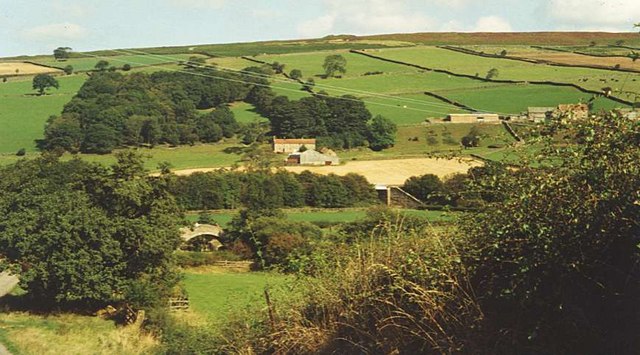|
Dale (landform)
A dale is an open valley. ''Dale'' is a synonym of the word '' valley''. The name is used when describing the physical geography of an area. It is used most frequently in the Lowlands of Scotland and in the North of England; the term " fell" commonly refers to the mountains or hills that flank the dale. Etymology The word ''dale'' comes from the Old English word ''dæl'', from which the word "dell" is also derived. It is also related to Old Norse word ''dalr'' (and the modern Icelandic word ''dalur''), which may perhaps have influenced its survival in northern England. The Germanic origin is assumed to be *''dala-''. ''Dal-'' in various combinations is common in placenames in Norway. Modern English valley and French vallée are presumably not related to dale. A distant relative of ''dale'' is currency unit dollar, stemming from German ''thaler'' or ''daler'', short for joachimsthaler coins manufactured in the town of Joachimsthal in Bohemia.Falk, Hjalmar (1991). ''Etymo ... [...More Info...] [...Related Items...] OR: [Wikipedia] [Google] [Baidu] |
Valley
A valley is an elongated low area often running between hills or mountains, which will typically contain a river or stream running from one end to the other. Most valleys are formed by erosion of the land surface by rivers or streams over a very long period. Some valleys are formed through erosion by glacial ice. These glaciers may remain present in valleys in high mountains or polar areas. At lower latitudes and altitudes, these glacially formed valleys may have been created or enlarged during ice ages but now are ice-free and occupied by streams or rivers. In desert areas, valleys may be entirely dry or carry a watercourse only rarely. In areas of limestone bedrock, dry valleys may also result from drainage now taking place underground rather than at the surface. Rift valleys arise principally from earth movements, rather than erosion. Many different types of valleys are described by geographers, using terms that may be global in use or else applied only locally. For ... [...More Info...] [...Related Items...] OR: [Wikipedia] [Google] [Baidu] |
Karst
Karst is a topography formed from the dissolution of soluble rocks such as limestone, dolomite, and gypsum. It is characterized by underground drainage systems with sinkholes and caves. It has also been documented for more weathering-resistant rocks, such as quartzite, given the right conditions. Subterranean drainage may limit surface water, with few to no rivers or lakes. However, in regions where the dissolved bedrock is covered (perhaps by debris) or confined by one or more superimposed non-soluble rock strata, distinctive karst features may occur only at subsurface levels and can be totally missing above ground. The study of ''paleokarst'' (buried karst in the stratigraphic column) is important in petroleum geology because as much as 50% of the world's hydrocarbon reserves are hosted in carbonate rock, and much of this is found in porous karst systems. Etymology The English word ''karst'' was borrowed from German in the late 19th century, which entered German ... [...More Info...] [...Related Items...] OR: [Wikipedia] [Google] [Baidu] |
Eskdale, North Yorkshire
Eskdale is a valley running west to east from Westerdale on the North York Moors to Whitby on the Yorkshire Coast of England. Formed during the last major ice age, it has a classic U-shaped valley formation caused by the action of glaciers carving away the rock. Eskdale is named after its river which in Celtic means water or stream. The dale carries the River Esk from the "Esklets" above Westerdale to the sea at Whitby. The tops of its steep-sided valleys are noted for their heather moorland, whilst below the land is mainly split between pasture for cows and Swaledale sheep and arable crops such as Oil seed rape. The Esk Valley Walk is a walk covering starting from the head of the Esk through the valley and down to Whitby. Eskdale School in Whitby is named after the valley. The Esk Valley Line runs through Eskdale from Commondale eastwards towards Whitby and is named after the dale. The river flows through the narrow valley that the water has cut into the soft shale of th ... [...More Info...] [...Related Items...] OR: [Wikipedia] [Google] [Baidu] |
.jpg)
